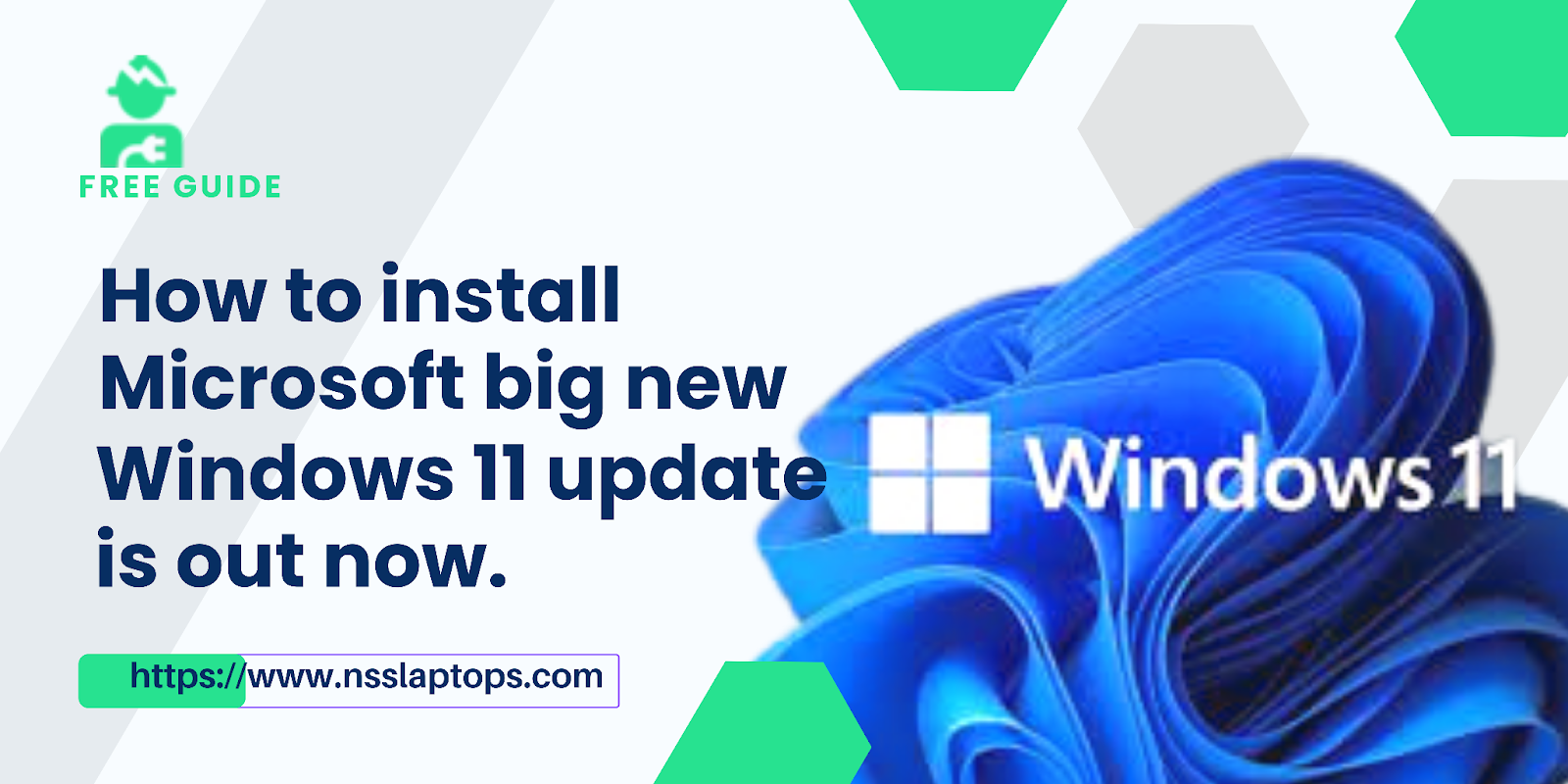
Want to download a Windows 11 ISO file for a new OS installation but don't know how to make it? Then you come to the right place. Here, we will show you how to get Windows for free. Besides, a complete Windows 11 setup guide step by step
Suppose your PC runs on Windows 10 64-bit and meets the Windows 11 64-bit requirements. You can get Windows 11 operating system for free via Windows update.
The official release was on Oct. 5, 2021. If you want to experience Windows 11 OS, you can download and install its Insider Preview Build or update your Windows 10 OS to Windows 11.
What's in Windows 11
Windows 11 features a streamlined new design with pastel colors, rounded corners, a unique start-up sound, and a more Mac-like look. The Windows Start menu has moved from the bottom left of the screen to the middle, with app icons in the center next to it. You'll find many new desktop tools, like widgets, to give you at-a-glance information and more accessible virtual desktop creation. Android apps will be integrated into Windows and installable from the Microsoft Store, though that feature won't be available immediately.
How to download Windows 11 without waiting
You can access your Windows immediately if you have Windows 10 or the latest laptop after 2020. Just check it out in your system. Some users can download Windows 11 the same way you'd get any new version of Windows. Go to Settings > Update & Security > Windows Update and click Check for Updates. If available, you'll see a Feature update to Windows 11. Click Download and install
Should You Upgrade to Windows 11? The Things to Consider
Microsoft's Windows 11 has many new features but a few problems. So, should users update to Windows 11 from Windows 10?
Microsoft advertises Windows 11 as the latest and greatest version of Windows that everyone should use enthusiastically with open arms.
Still, the OS has a few kinks that need to be ironed out. However, Windows 11 comes with most of the critical features of Windows 10, even though its design has a slightly different look and feel.
There is no reason not to upgrade to Windows 11 if you are running Windows 10 or 7, except because of the technical limitations of your current computer.
Some examples of constraints that may prevent you from switching to Windows 11
Architecture: there will no longer be a 32-bit version of Windows 11, so if your CPU is 32-bit, it is incompatible with Windows 11.
Boot method and Secure Boot: the computer will first boot to a BIOS or UEFI. Very old PCs only have an old-generation BIOS that is incompatible with Windows 11. But this concerns computers that were not already running Windows 10.
CPU compatibility, number of cores, frequency: Theoretically, the processor should be on this official list. However, any 64-bit processor with a "disable bit" function already required for Windows 10, at least two cores and a frequency of at least 1 GHz could run Windows 11. If you have a red checkmark in the list, it is incompatible with Windows 11. On the other hand, quite often, there is an orange checkmark. This means that the processor meets the requirements but is not (yet) on the list.
Direct X + WDDM: This is related to the graphics card. If you have a laptop or an all-in-one and a red checkmark here, it is incompatible with Windows 11. If you have a desktop or tower PC, you can probably replace your graphics card with a newer compatible model.
Amount of RAM: you need at least 4GB of RAM. Most of the time, you can increase your RAM if you have less than 4GB. If your PC cannot reach 4GB, it is incompatible with Windows 11.
Available storage is just the disk space open to install Windows 11. If it is insufficient, chances are you can quickly increase it.
TPM version: This is a hardware security chip, which will be the most common cause of incompatibility.
If, unfortunately, the conclusion is that your PC is incompatible with Windows 11, know that Windows 10 will be maintained and supported until October 2025.
If you are facing a problem installing the window, call our executive for a paid consultation.
Windows 11 is a free operating system.
Windows 11 is the free operating system from Windows 10, providing improved apps and functionality from predecessors like Windows 7. It rivals the likes of competitors Linux and macOS as one of the top PC platforms. You can look forward to many new features, but you'll need to meet the strict requirements, such as 64 GB of available storage space.
Although there are stringent system requirements to upgrade to the new OS, Microsoft doesn't take such workarounds lightly, although there are ways to circumvent those requirements. It has started warning users who have installed the software on unsupported hardware.
Hardware requirements for Windows 11
Processor one gigahertz (GHz) or faster with two or more cores on a compatible 64-bit processor or system on a Chip (SoC).
RAM 4 gigabytes (GB).
Storage 64 GB or more prominent storage device Note: See below under "More information on storage space to keep Windows 11 up-to-date" for more details.
TPM Trusted Platform Module (TPM) version 2.0.
The graphics card is compatible with DirectX 12 or later with a WDDM 2.0 driver.
Display High definition (720p) display is more significant than 9" diagonally, 8 bits per color channel.
How to get Windows 11 reset
Open the Settings app on your Windows 11 PC to begin the reset process. I hope you can do this by pressing the Windows+ I keys simultaneously. In Settings, from the left sidebar, select "System."
On the "System" page, click "Recovery."
In the "Recovery" menu, next to "Reset this PC," click "Reset PC."
You will see a "Reset this PC" window. In this window, choose one of the following two options:
-
Keep My Files: Select this option to delete your apps and settings, but keep your files.
- Remove Everything: This option removes your apps, settings, and personal files. You should choose this if you're selling or giving away your device.
A "How Would You Like to Reinstall Windows" screen will appear. If you'd like to reinstall Windows 11 from the cloud, select the "Cloud Download" option. To locally reinstall Windows 11, select the "Local Reinstall" option.
If you follow the instructions on your screen, you can easily reset your PC.
How do I format and reinstall Windows 11?
Settings > System. > Recovery > Reset PC > Keep my files > Cloud Download >Local reinstall > Next Reset
Do you want to reinstall Windows 11 on your laptop or desktop without losing your files? That's why you are here. You can use these steps to reinstall Windows 11
-
Open Settings.
-
Click on System
-
Click on Recovery on the right side.
-
Under the "Recovery options" section, in the "Reset this PC" setting, click the Reset PC button to begin Windows 11 reinstallation.
-
Click the Keep My Files option.
-
Select the Cloud download option to download Windows 11 for fresh reinstallation. Or Select the Local reinstall option to use the local files to reinstall the OS without losing your data.
-
Click the Next button.
-
Click the Reset button.
After you complete the steps, Windows 11 will reinstall and keep your files. However, the process will reset the settings and remove your apps if you select the cloud download or local reinstall option.
Check out my other post, How to Clear Cache in Windows 10 Using Run.
Frequently Asked Questions
Popular Services
- MacBook Battery Replacement Cost
- HP Printer Repair in Delhi NCR
- Dell Laptop Repair
- HP Laptop Repair
- Samsung Laptop Repair
- Lenovo Laptop Repair
- MacBook Repair
- Acer Laptop Repair
- Sony Vaio Laptop Repair
- Microsoft Surface Repair
- Asus Laptop Repair
- MSI Laptop Repair
- Fujitsu Laptop Repair
- Toshiba Laptop Repair
- HP Printer Repair Pune
- Microsoft Surface Battery Replacement
- Microsoft Surface Screen Replacement




